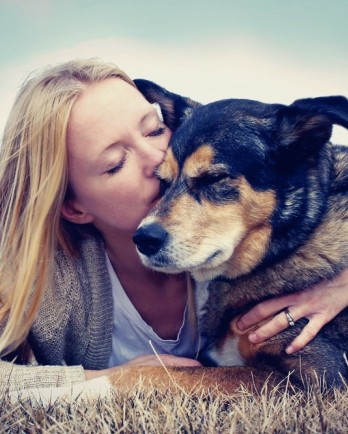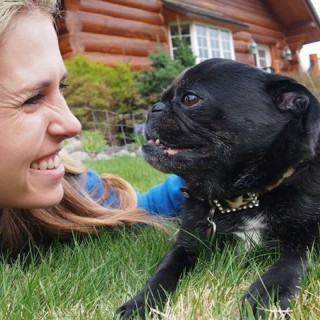Thinking through the Goodbye by Dr. Julie Buzby, DVM
Contributor Dr. Julie Buzby, DVM, CAVCA, CVA is an integrative veterinarian and a Grey Muzzle Advisory Board member. She has published numerous articles on canine health and wellness, and has a new blog, The Buzby Bark. You can also find more of her articles for Grey Matters here.
Winston Churchill said, “Never, never, never give up.” For most of life’s challenges, it is brilliant advice. But many of us will face a time when we make an intentional choice to “give up” the fight against saying goodbye to our canine companion. Of course, I am specifically referring to an end-of-life decision necessitated by declining quality of life, rather than a convenience issue.
I used to tell my clients, “You’ll know when it’s time.” Dr. Kathy Cooney, founder of Home to Heaven veterinary hospice, taught me to say, “We’ll know when it’s time.” It’s a truer representation of the ideal scenario—the dog’s family and doctor(s) functioning as a team of advocates for the patient.
A zillion people have told me, “I could not be a veterinarian, because I could never put dogs to sleep.” Strangely, despite the grief, I’m blessed each time I guide a dog and his people peacefully through the process of euthanasia. It’s very intimate and the stakes are high. Here are some things I’ve learned over the years:
1. In my observation, home euthanasias are the least stressful on the dogs and their people. Ask your veterinarian if this is something that can be arranged. If not, pet hospice practitioners offer home euthanasia and may be available in your area. Realistically, being at the veterinary hospital may be your only option, but this doesn’t mean your dog has to sit on a stainless steel table in an exam room, unless that is your preference. I’ve euthanized dogs cuddling with their owners on fluffy comforters on an exam room floor, lying in their owners’ arms in the backseat of their car, and outside in the grass. My goal is to work in the environment where the dog will be the most content.
2. In most cases, it’s standard operating procedure for veterinarians to administer sedation prior to the euthanasia solution, but it’s worth asking your doctor what to expect as the process unfolds. The pre-euthanasia injection relaxes the dog, dulls pre-existing pain, and typically ensures a smooth transition.
3. Before an emotional crisis with your senior dog’s health, ponder your ideal scenario for saying goodbye. It’s painful to process, but much easier to think about in the hypothetical. I appreciate having the opportunity to discuss a client’s questions when we’re not both in tears. Some things to consider:
* My clients typically appreciate when I clip a tuft of their dog’s hair for them to save. It’s quick, simple, and painless, and often hair is shaved anyway for placement of an IV catheter or to better visualize the injection site.
* Another excellent keepsake is a clay paw print. Many veterinary offices offer these to clients, or the option of stamping your dog’s paw print onto a piece of paper, which can be framed or easily stored.



